Articles > Geography
Know Slovenia Largest Cities? Here are the top 25 to get you started.
1. Ljubljana (Population: 290,903)
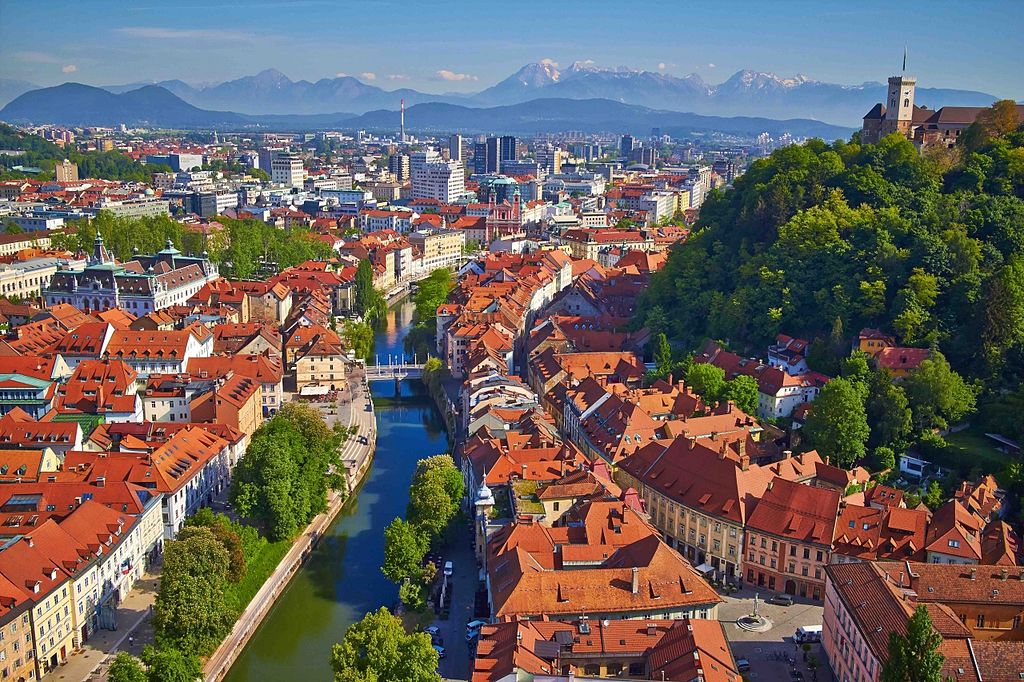
Ljubljana, the capital and largest city of Slovenia, is the political, cultural, and economic heart of the country. Nestled along the Ljubljanica River, the city is renowned for its picturesque old town, baroque architecture, and vibrant café culture. Ljubljana Castle, perched on a hill, dominates the skyline and offers panoramic views. The city is also famous for its bridges, such as the iconic Triple Bridge designed by Jože Plečnik, whose architectural influence defines much of Ljubljana’s identity. As a hub of education and innovation, the University of Ljubljana drives cultural and scientific development. Despite its status as a capital, Ljubljana retains a relaxed, green atmosphere, with extensive pedestrian zones and bike-friendly streets. The city also hosts numerous festivals, from jazz to theater, highlighting its artistic spirit.
Interesting Fact:
Ljubljana was named the European Green Capital in 2016 for its sustainability initiatives.
2. Maribor (Population: 97,522)
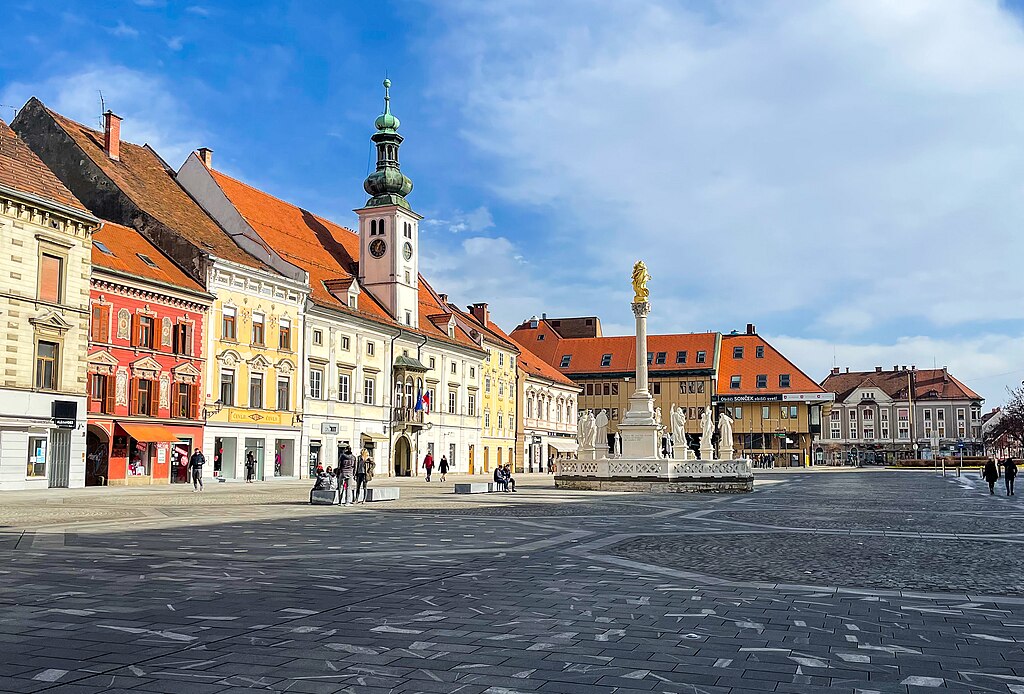
Maribor, Slovenia’s second-largest city, lies on the banks of the Drava River and is surrounded by the picturesque Pohorje Mountains. Historically a trade and industrial hub, it is now equally known for culture, education, and wine-making. The city’s Lent district is home to the world’s oldest grapevine, over 400 years old, still producing wine each year. Maribor’s lively student population ensures a dynamic nightlife and cultural scene, including the renowned Lent Festival, one of the largest open-air festivals in Europe. Winter sports enthusiasts flock to the nearby Pohorje ski resort, making Maribor a year-round destination. Its combination of medieval charm, natural beauty, and modern energy makes it a vital part of Slovenia’s identity.
Interesting Fact:
The Old Vine in Maribor is recognized by Guinness World Records as the oldest producing grapevine in the world.
3. Celje (Population: 38,059)
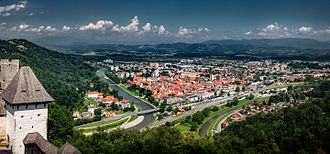
Celje, located in eastern Slovenia, is known as the “City of Counts” due to its historical association with the powerful Counts of Celje in the Middle Ages. Its most striking landmark is Celje Castle, a sprawling fortress that dominates the city’s skyline and offers insights into its feudal past. Today, Celje blends history with modern development, featuring museums, galleries, and a lively cultural calendar. Its economy is diverse, including trade, manufacturing, and education. The city is also a gateway to surrounding natural attractions such as the Savinja River Valley, which provides opportunities for outdoor recreation. Celje’s historical significance, combined with its vibrant urban life, ensures it remains one of Slovenia’s most captivating cities.
Interesting Fact:
The Counts of Celje once rivaled the Habsburgs in influence during the 14th and 15th centuries.
4. Kranj (Population: 37,966)
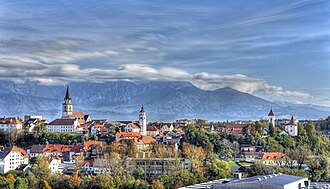
Kranj, located in northwestern Slovenia, is the country’s fourth-largest city and often considered its “industrial capital.” Situated between the Sava and Kokra rivers, Kranj has long been an important trade and industrial center, with textiles, rubber, and electronics shaping its economy. The old town features Gothic architecture, including the Church of St. Cantianus, while beneath the city lies a fascinating network of tunnels used during World War II. Kranj is also associated with Slovenia’s greatest poet, France Prešeren, whose legacy is celebrated here. Modern Kranj balances its industrial reputation with natural beauty, offering easy access to the Alps and outdoor activities.
Interesting Fact:
France Prešeren, Slovenia’s national poet, lived and worked in Kranj, where his house is now a museum.
5. Koper (Population: 26,410)
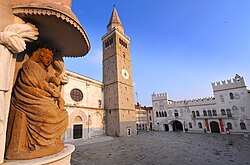
Koper, Slovenia’s primary seaport, lies on the Adriatic coast and plays a crucial role in the nation’s economy. Once under Venetian rule, Koper still displays its Italian influence in architecture and culture, particularly in its old town with landmarks like the Praetorian Palace and Loggia Square. As Slovenia’s only commercial port, Koper is vital for international trade, logistics, and shipping. Beyond its economic significance, Koper is also a tourist destination, attracting visitors with its seaside promenade, cultural events, and Mediterranean atmosphere. The combination of maritime commerce and coastal charm gives Koper a unique identity in Slovenia.
Interesting Fact:
Koper’s Venetian influence is so strong that Italian remains widely spoken in the city.
6. Velenje (Population: 25,642)
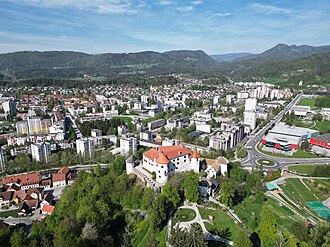
Velenje, located in northern Slovenia, is one of the country’s youngest cities, developing rapidly during the socialist era in the mid-20th century. Built as a model industrial town, Velenje grew around coal mining and energy production, particularly the Šoštanj Thermal Power Plant. The city center, with its modernist architecture and open squares, reflects its planned origins. Velenje is also home to Velenje Castle, which overlooks the city and houses a museum. Today, it maintains a balance between its industrial economy and cultural life, hosting festivals and events that attract residents and visitors alike.
Interesting Fact:
Velenje is home to the tallest statue of Josip Broz Tito in the world, reflecting its socialist heritage.
7. Novo Mesto (Population: 24,700)
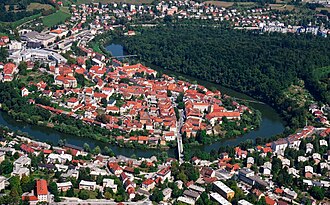
Novo Mesto, in southeastern Slovenia, is a city rich in cultural and archaeological heritage. Situated along the Krka River, it is famous for its prehistoric situlae, intricately decorated bronze vessels that showcase its ancient roots. The city later grew as a Renaissance and Baroque settlement, with notable churches and town squares still preserved today. Novo Mesto is also an important industrial center, particularly in pharmaceuticals and automotive manufacturing. Surrounded by vineyards, it is part of the Dolenjska wine region, known for its distinctive cviček wine. Novo Mesto seamlessly combines history, industry, and viticulture.
Interesting Fact:
Novo Mesto is considered the archaeological capital of Slovenia due to its rich prehistoric finds.
8. Ptuj (Population: 18,291)

Ptuj, often referred to as Slovenia’s oldest town, lies along the Drava River in the northeastern part of the country. Its history stretches back to Roman times, when it was known as Poetovio, a major settlement of the Roman Empire. Today, Ptuj is famous for its well-preserved medieval castle, charming old town, and the annual Kurentovanje festival, one of Europe’s most colorful carnivals. The city also thrives on wine-making, with extensive vineyards surrounding it. Ptuj’s blend of ancient history, cultural traditions, and wine tourism makes it a gem of northeastern Slovenia.
Interesting Fact:
The Kurentovanje festival in Ptuj is listed on UNESCO’s Representative List of Intangible Cultural Heritage.
9. Jesenice (Population: 13,787)
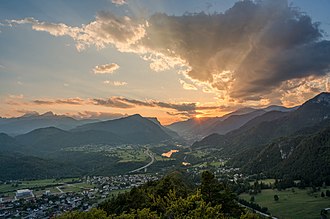
Jesenice, located in northwestern Slovenia near the Austrian border, is historically known as the country’s steel capital. The iron and steel industry defined the city for centuries, shaping both its economy and identity. Today, while heavy industry has declined, Jesenice remains an important industrial and commercial center. Its location near the Julian Alps makes it a gateway to Triglav National Park, attracting hikers and skiers. Jesenice is also famous for its ice hockey tradition, with its team among the most successful in Slovenia. The city thus combines industry, sports, and mountain access.
Interesting Fact:
Jesenice is often called the “cradle of Slovenian ice hockey” due to its long tradition in the sport.
10. Kamnik (Population: 13,753)
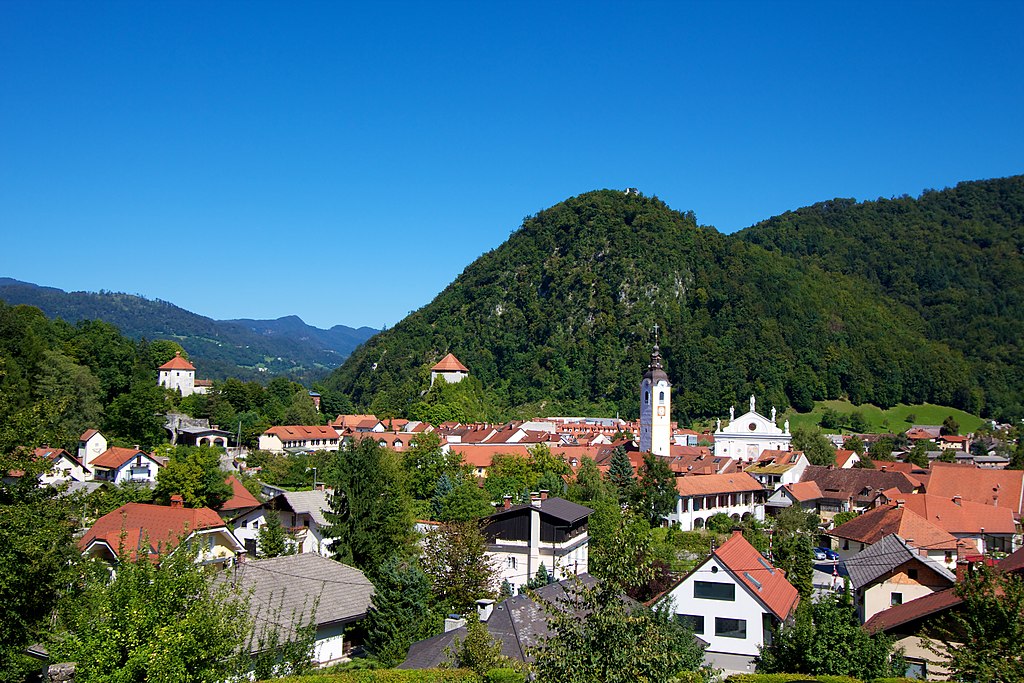
Kamnik, situated north of Ljubljana, is one of Slovenia’s most picturesque towns, framed by the Kamnik–Savinja Alps. With medieval roots, it features charming streets, castles, and monasteries, reflecting its rich heritage. Kamnik is also known for its spa tourism, thanks to nearby thermal springs, and for being a starting point for excursions into the mountains. Its economy blends small industries, crafts, and tourism. Each year, Kamnik hosts the Days of National Costumes and Clothing Heritage, a festival celebrating Slovenia’s folk traditions. The city combines alpine beauty, cultural heritage, and community spirit.
Interesting Fact:
Kamnik’s annual costume festival is the largest ethnographic event in Slovenia.




